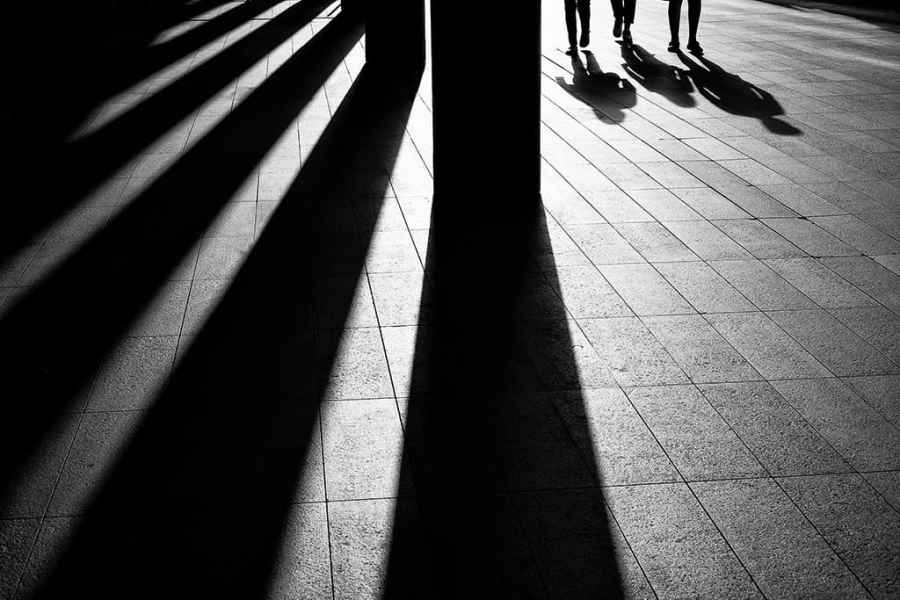When used effectively shadows can direct the viewer’s attention, create impact, and emphasise texture. Tracy Calder explains how
In his wonderful (if occasionally offensive) 1933 essay In Praise of Shadows, author Junichiro Tanizaki considers the role that shadows play in Japanese culture. From architecture to theatre and food, he argues that the sensitive use of shadow and light can heighten the beauty of spaces, faces and objects.
‘Our ancestors, forced to live in dark rooms, presently came to discover beauty in shadows,’ he reveals, ‘ultimately to guide shadows towards beauty’s ends.’ For Tanizaki, shadows create a sense of mystery, tranquillity and depth. He marvels at the beauty of heavy shadows against light, the sensory richness of dark spaces and areas of contrast. ‘Were it not for shadows,’ he says, ‘there would be no beauty.’
In the West, however, it’s fair to say that our relationship to shadows hasn’t always been so positive. As children we often declare that we are afraid of the dark and as adults we flood our homes with light, eradicating darkness. Artist Philippa Stanton perfectly encapsulates this in her book, Conscious Creativity.
‘I have always had a wariness of shadows,’ she confesses. ‘Shadows can be frightening, an unknown quantity, harbouring threat and shadowy characters. But shadows are a part of life, both aesthetically and spiritually. As silence proves the sound and pausing proves the act, it is always darkness that proves the light.’
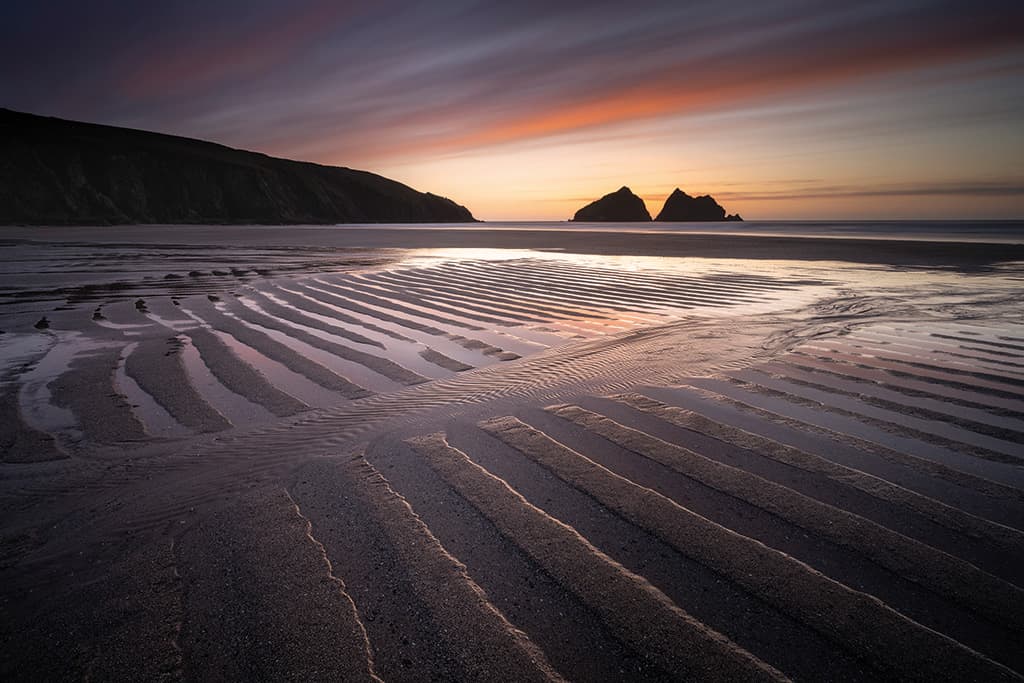
© Ross Hoddinott. The deep ripples in the sand made obvious and photogenic lead-in lines, with light and shade helping to highlight their structure and direction further. Holywell Bay, Cornwall. Nikon Z7 II, 14-30mm, 30sec at f/11, ISO 64
The good the bad and the ugly
Essentially, a shadow is just a dark area or shape cast by an object that stands between rays of light and a surface. But, as Tanizaki suggests, not all shadows are equal. When shadows and light are used insensitively – think bags under a model’s eyes or ugly shapes created by the use of on-camera flash – they can destroy a picture.
When used sensitively, however, shadows can serve a whole variety of aesthetic functions: they can direct a viewer’s gaze, help to describe the form of an object, emphasise texture, create a sense of mystery, improve the balance of a composition, become the subject of an image themselves or simply lessen the impact of less-desirable elements in the frame.
To understand the complex beauty of shadows, and harness their potential in your work, I suggest looking at artforms such as painting and cinema as well as photography. As a film noir fan, I’ve often marvelled at the way shadows can be used to suggest states of mind, impending disaster or sensations of heat or fear. (If you’re new to the genre, I recommend starting with Double Indemnity or The Third Man). When it comes to painting, Rembrandt knew exactly how to balance shadows and light.
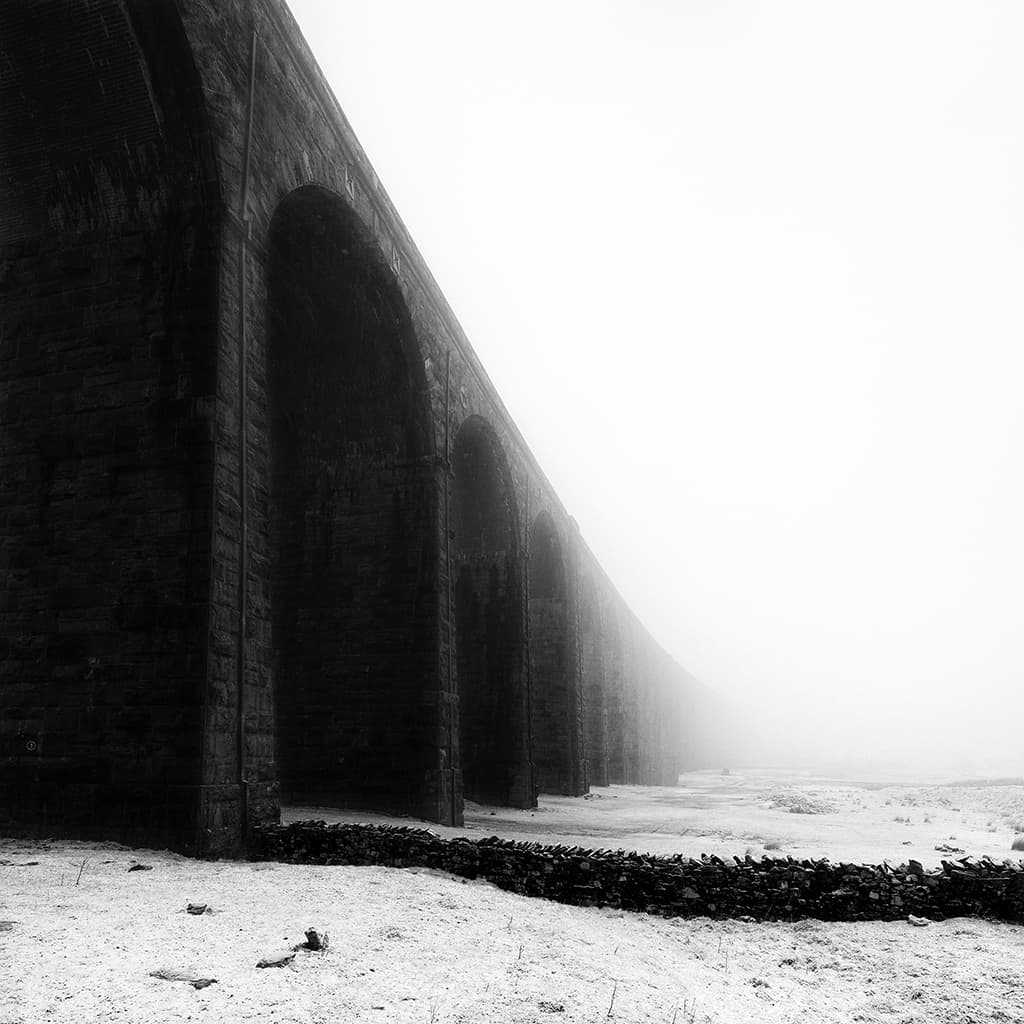
© Ian Bramham. The aim was to contrast the dark forbidding shadows of the railway viaduct with the white of the snowy ground and the misty sky. Ribblehead Viaduct, Yorkshire. Nikon D800, 16-35mm, 1/5sec at f/8, ISO 100
While most of his contemporaries used shadows to convey information about an object’s form or position in space, Rembrandt gave his shadows psychological weight. Naturally, there are plenty of photographers who have used shadows to brilliant effect – some of my favourites include Paul Strand, Edward Weston and Robert Adams. When you look at these artworks, think about the role that shadows play in each scene.
What roles do shadows play?
Shadows can be a great way of leading a viewer’s eye around a picture. When an area of deep shadow contrasts with an area of bright light the eye is naturally drawn to this part of the frame. What’s more, when the transition from dark to light is sudden, it creates a sharp edge or line that the eye will try to follow.
Armed with this knowledge, you can position shadows in a way that will draw attention to key elements of the composition and dictate the order in which they are viewed. Shadows can also comprise shapes that will encourage the eye to move around the frame in a certain way.
A triangular shadow, for example, may help to link three otherwise disassociated elements in the scene together. (There are plenty of articles devoted to the psychology of shapes, so I won’t go into it here!)
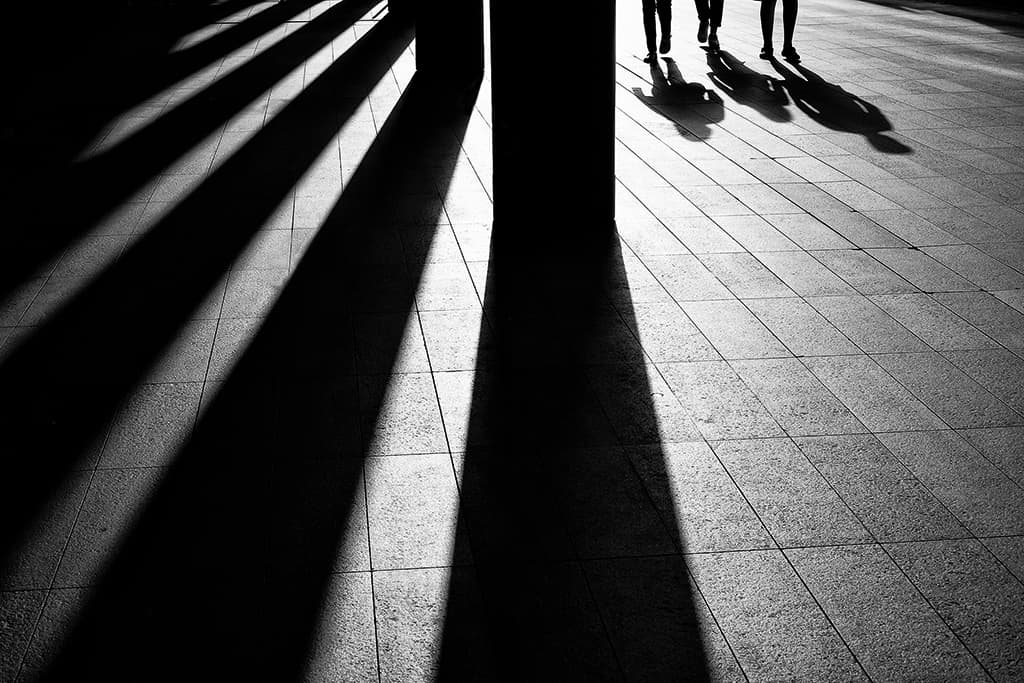
© Jeremy Walker. The shadows interacting with the lines of the pavement caught my eye, but the image had an empty space on the right until three people walked into it! Taken on the streets of London. Leica M10, 50mm, 1/2000sec at f/8, ISO 1600
If you’ve ever taken drawing lessons, you will be familiar with the ‘egg shading’ exercise. Basically, it involves using various pencil strokes and shading techniques to fully describe the form of a humble egg. While it’s designed for beginner artists, the exercise is great for photographers too.
By moving a basic light source, such as a desk lamp, closer or further away from an egg you can observe how the shape and position of the shadows change. Next, you can position the lamp to the side, then point it straight down or even up onto the egg to see how it alters things. It can be interesting to notice how areas you thought might be in shadow receive a touch of light reflected from the surface the egg is sitting on.
Shadows are also great for emphasising texture. Landscape photographers often wax lyrical about the quality of light immediately after sunrise and before sunset, and when you look at their pictures it’s easy to see why.
When the sun is low in the sky its rays are sometimes obstructed by trees, hills and other natural forms, which results in long shadows thrown onto the landscape. This mix of light and dark helps to emphasise texture and form as well as providing a sense of depth.

© Jeremy Walker. Grey overcast weather and a dirty window on a train allowed for lovely side lighting in this portrait
Leica M (Typ 240), 50mm, 1/500sec at f/6.8, ISO 1600
If we return to the movies again, we can also see how shadows can be used to imply mystery. Perhaps the most obvious example is FW Murnau’s Nosferatu where the shadow of Count Orlok creeps up the stairs, gaining an almost physical presence, as it slips into Ellen’s room and clutches at her chest.
We fill in what we can’t see with our mind, making it all the more terrifying! Of course, shadows can also become the sole subject of an image (with all other elements eliminated).
For this to work you need a shadow with a clear outline and a clear purpose. Are you trying to create an abstract image that balances shapes, lines and space, for example, or are you trying to show the delicate nature of a branch full of blossom?
A shadow by itself isn’t always that interesting, certainly, but a shadow that is positioned in the frame with clear purpose and an understanding of composition is much more likely to result in a successful picture.
Finally, we can use shadows to hide (or downplay) less-desirable aspects or elements in a scene – this has benefits for portrait photographers, but in addition it’s pretty handy for street photographers who might find themselves dealing with unsightly street furniture (bins, ugly park benches and the like).
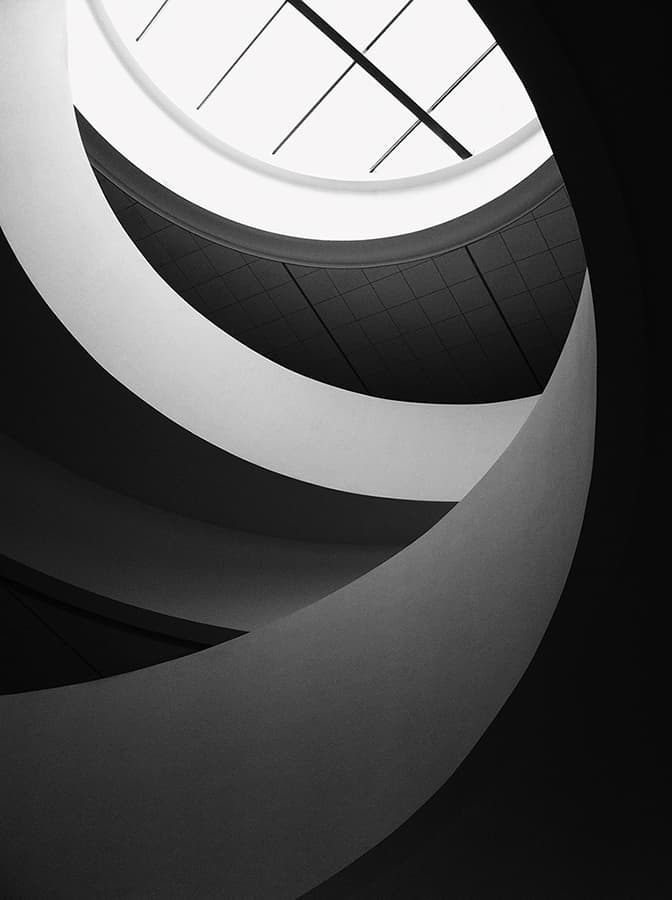
© Ian Bramham. The subtle gradation of shadows from dark to light emphasises the set of curves as the staircase climbs towards the skylight. Liverpool Museum. Apple iPhone 4, 3.85mm, 1/160sec at f/2.8, ISO 8
Working with shadows
Without light there can be no shadows – it’s the yang to the yin. The appearance of these shadows (how intense, well defined, big or small they are) will depend upon the size, angle and distance of the light source in relation to the object casting the shadow.
When the sun is low in the sky, for example, it provides strong directional light, and the shadows will often be clearly defined, dark and long. However, if the light source is far away and weak then the edges of the shadows will be soft and less well defined.
If you’re working with sunlight, it’s important to remember that the angle and intensity of this natural source will change depending on the seasons, the weather conditions and the time of day. (During the winter solstice, for example, the noon sun is the lowest it will be all year.) If you have the time, spend a day in one location and watch how the shadows shift and morph.
Pay particular attention to the areas of transition from light to dark: are these soft and gradual or hard and sudden? Look at the shadows and see if there are any colours or tones to perceive. Sometimes the darkness is full of life and energy.
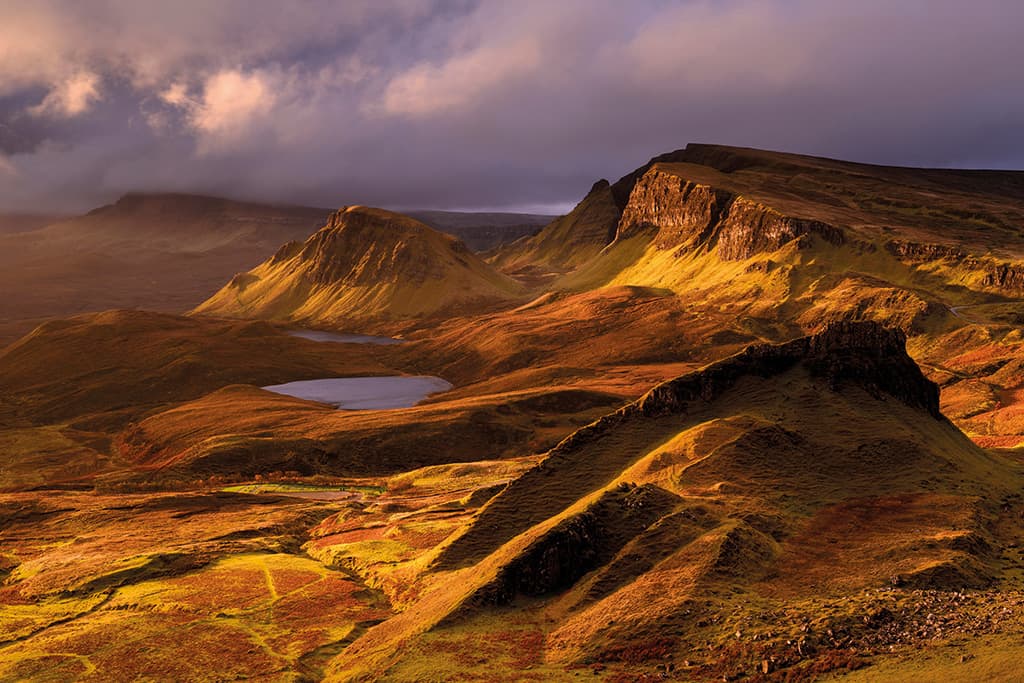
© Ross Hoddinott. Low, warm morning sunlight shaped this dramatic mountainous landscape, creating deep shade, texture and depth. Quiraing, Isle of Skye. Nikon Z 7, 24-70mm, 1/5 sec at f/11, ISO 64
Alternatively, if you’re working with artificial light then rejoice in your ability to take control over the intensity, angle and distance of the light in relation to the subject. But don’t disregard everything you have learnt about the subtlety and richness of shadows. Sure, you can use light modifiers to strengthen, weaken or shape the shadows. But you still need to be clear about their purpose in the image and the story you’re trying to tell.
As photographers we spend much of our time observing, responding or creating interesting light. For many of us, shadows are something to be eliminated or ‘lifted’. But if we start to consider shadows as areas for investigating beauty then the images we produce may well have a freshness and vitality that takes us by surprise.
Five top tips for creating impact with shadows
Experiment with colour
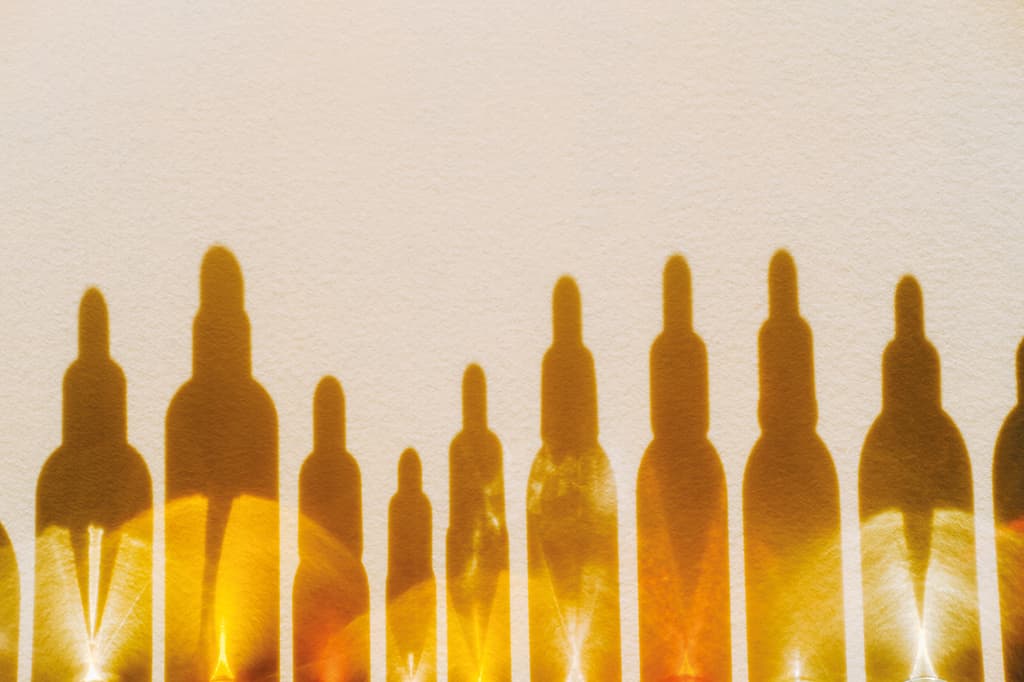
© Getty Images / Anna Efetova
Shadows don’t have to be grey (or black). If a colourful translucent object blocks rays of light then the end result will be colourful shadows! Experiment with balloons, colourful glass vases or children’s toys as these can have really striking shapes.
Look for shadows
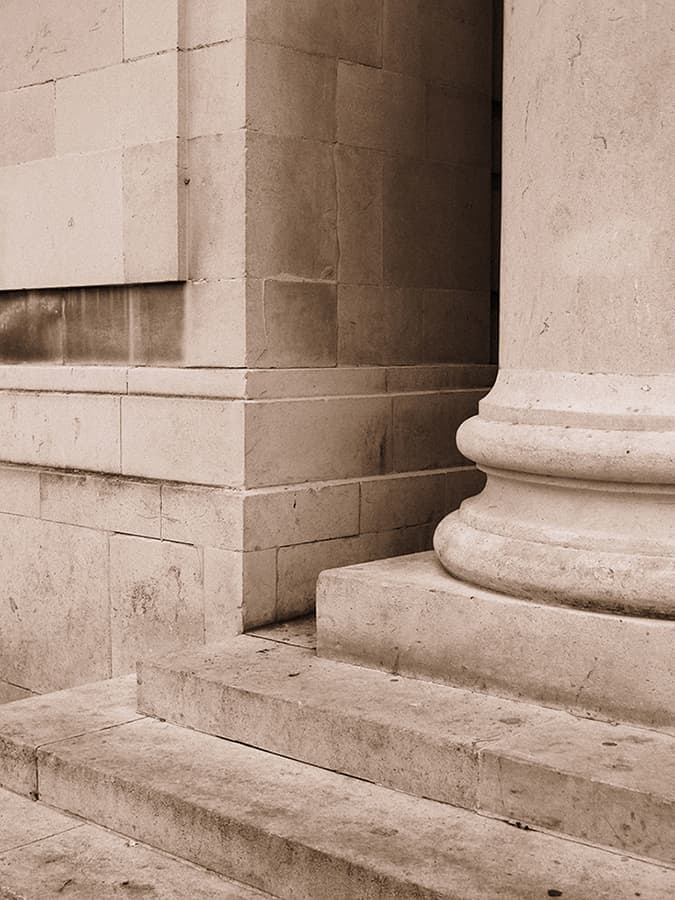
© Tracy Calder
Go out with the intention of capturing shadows and nothing else. Once you get your eye in, you’ll start noticing all of the dark recesses and hidden corners in your immediate environment. Exploit all of this fresh picture potential!
Think about surfaces

© Tracy Calder
Consider how the surface your shadow falls on will affect its shape, intensity etc. Experiment with different textures, colours and forms. Remember that some surfaces will act like reflectors bouncing light back onto your subject.
Make it black and white

© Getty Images / Alberto Cabanillas / EyeEm
Sometimes it can be easier to see shadows if we remove the distraction of colour and work in black & white. Shooting in monochrome allows you to concentrate on lines, shapes, shadows and forms and it enables you to notice areas of subtle transition more easily.
Add some lines
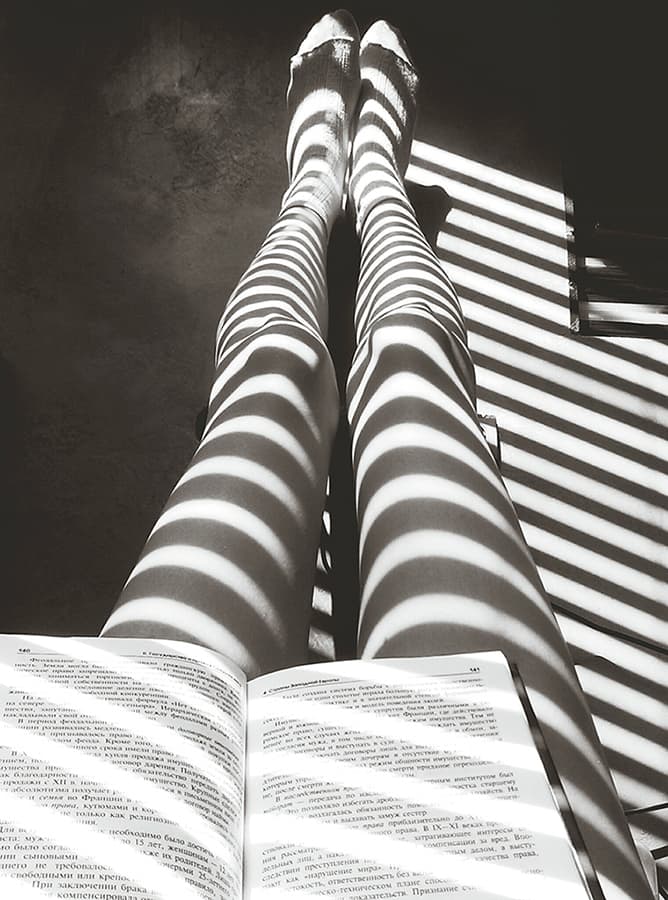
© Getty Images / Katerina Zakolotneva /EyeEm
If you watch the film noir examples cited earlier, you’ll notice how shadows can actually be directed onto a subject to add drama or create a certain mood. Some portrait photographers like the look of sun rays directed through window blinds, as the shadows they produce are especially graphic.
Further reading

